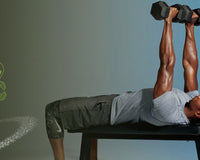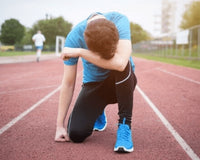Leg exercises are a big challenge for the beginner. Leg and back workouts have many similarities: First, it is more complicated. Compared with training chest or arms, training legs is more difficult to control; Some muscle groups are used. Our philosophy is to let novices get familiar with different movements and enhance the primary strength of the legs before actually starting to do heavy-weight leg training. This way, it can be well controlled when doing difficult movements such as barbell squats later to achieve the best exercise effect.
The leg workouts in this article are equipment training, which will make novices pay more attention to the movements' postures and increase the novices' mastery of their movements. When coordination and muscle strength are improved, we can move on to more challenging workouts. Again, fitness is a process. In this process, you must let go of your face and ego and respect the process to achieve your fitness goals.
Benefits of Leg Exercises

Leg exercises can have a significant effect on muscle growth throughout the body.
- Leg workouts can increase the level of male hormones in the human body. It can help you break through the bottleneck period of fitness and also help improve muscle strength. If the power of the legs is strong, it is easier to train the upper limbs to be stronger. In the long run, feeling top-heavy, "bird legs" not only bring a more significant burden to your spine but also affect the overall aesthetics of your body.
- Most leg workouts can stimulate the abdominal muscles, that is, your core muscles, and the part of the muscles that leg training trains is the part that is difficult to stimulate when you usually train the abdominal muscles alone.
- Leg muscles account for 70% of the body's muscles. You can imagine how much blood is stored in the legs. If you only train the upper body, the burden on the heart will increase, which will quickly cause cardiovascular diseases and even accelerate the speed of body aging; Only leg training can improve cardiopulmonary function and enhance blood circulation. In addition, since leg muscles account for a high proportion of human body muscles, they are also a huge calorie-consuming part. Leg training can also help you accelerate fat burning.
- The muscles of the buttocks and the powers of the back of the thigh support the body's skeleton and upper body. Only with sufficient training can the spine maintain a natural S-like shape. This will not only make your current body look better but also improve your life after old age quality
5 Leg Exercises
Bodyweight Squat

- Stand upright with your feet shoulder-width apart, hands and fingers crossed behind your head. This is the starting position for the action.
- Bend your knees, keep your back straight, sit your hips back, squat your body down, and inhale simultaneously. until the thighs are parallel to the ground.
- Then get up and return to the starting position while exhaling.
- 4 sets, each set close to failure (rest 90 seconds)
Dumbbell Goblet Squat
You can do this with adjustable dumbbells or hex dumbbells.
- Set your feet in your preferred stance (likely with your toes pointed slightly outward as seen in the illustration above) and hold a dumbbell goblet style.
- With your chest up and shoulders down squat between your knees until your elbows are almost touching the inside of your knees.
- Pause and then drive your feet through the floor, stand straight up and finish by squeezing your glutes.
4.4 sets, each set close to failure (rest 90 seconds)
Leg Press

- Sit on the machine, fix your legs on the platform in front of you, and spread your legs shoulder-width apart.
- Use your legs, straighten your legs, open the safety bolt, and make sure not to lock your knees, your torso and legs should be at a standard 90 degrees, this is the starting position of the action.
- While inhaling, slowly lower the platform until the angle between the thigh and calf is 90 degrees.
- While exhaling, force the entire sole and use the strength of the quadriceps to return to the starting position.
5.3 groups, 10-12 times each (rest 90 seconds)
Leg Extension

- Choose the weight, sit on the machine with your legs under the mat (toes pointing forward), and grab the side handles with both hands. This is the starting position for the action. Tip: You will need to adjust the mat to rest on the lower part of your legs (above the feet). Make sure your thighs and thighs form a 90-degree angle. If the angle is less than 90 degrees, the knee is over the toes, which puts unnecessary stress on the knee joint.
- As you exhale, use your quadriceps to extend your legs as far as possible. Make sure the rest of your body stays still in the seat. Hold for 1 second in the tense position.
- While inhaling, slowly lower the weight to the initial position, ensuring you do not exceed the 90-degree angle limit.
- 3 sets, 10-12 reps each (60 seconds rest)
Seated Leg Curl

- Adjust the machine barbell to your height and sit on the machine with your back resting on the back mat.
- Place the back of your lower leg on the bar (a few centimeters below your calf), ensuring the plate loop is against your thigh, over your knees. Then grab the handles on either side of the machine, with your toes pointing forward (or you can use one of the other two positions), making sure your legs are fully extended in front of you. This is the starting position for the action.
- While exhaling, pull the bar as far as possible toward the back of your thighs, bending your knees. Keep your torso still. Hold for 1 second in the tensest position of the muscle.
- While inhaling, slowly return to the starting position.
- 3 sets, 10-12 reps each (60 seconds rest)
Standing Calf Raise

- Stand with your toes on top of the pedals of the standing calf raise, with your heels in the air. Place your shoulders under the pad, straighten your legs, and lift the weight. Then lower your heels as low as you can toward the ground, feeling the maximum stretch in your calf muscles. Keeping your knees slightly bent throughout the movement allows the lower part of your calf to be worked as much as the upper part. I like to have something high enough under my foot to get a full stretch when I lower my heel.
- From the bottom of the movement, use your toes to prop up your body as far as possible. The training weight should be heavy enough to work the calves but not so heavy that you can only complete part of the movement upward on most repetitions.
3.3 sets, 15 reps each (60 seconds rest)
Precautions
- You need to warm up adequately before training but don't overwork yourself while warming up.
- In weight selection, according to the recommended number of times for each group listed below, try to choose a weight that allows you to achieve close to failure for each group. Remember to keep the correct posture the same to do a few more when you are about to fail. One of the purposes of novice training is to learn the proper stance.
- After 1-2 sets of each movement, because of muscle fatigue, you can try to reduce the weight a little while increasing the number of times according to your situation.










